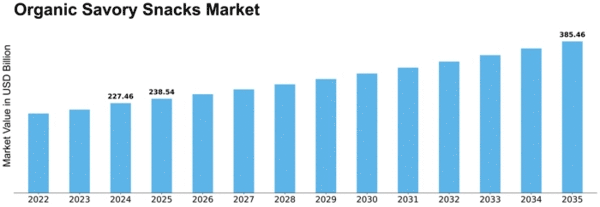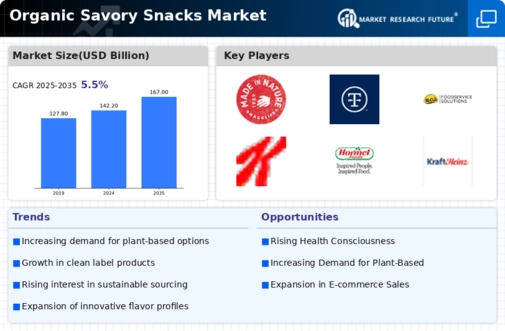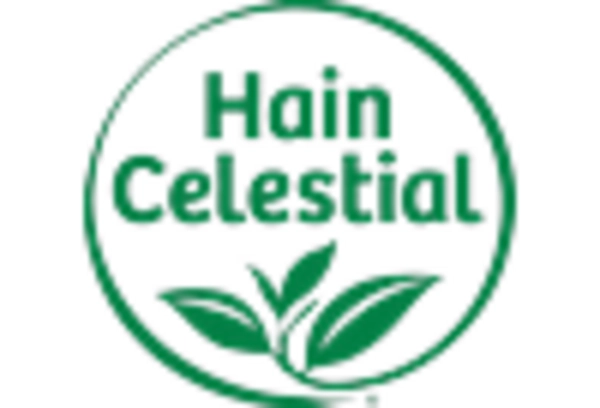Organic Savory Snacks Size
Organic Savory Snacks Market Growth Projections and Opportunities
There are several elements that influence the growth and consumer attractiveness of the organic savory snack industry. An important factor driving this industry is the growing customer desire for organic and healthier food alternatives. Snacks consisting of organic ingredients and devoid of artificial fungicides and preservatives are becoming more and more popular as people become more health and environmental concerned. The market for organic savory snacks has been driven by this change in consumer behavior, as consumers look for delicious and fulfilling snack options without sacrificing their commitment to organic and sustainable solutions. The market for organic savory snacks is significantly shaped by the clean eating movement and the increased transparency of product labels. Nowadays, consumers are increasingly aware of the ingredients in the snacks they eat, and they are lured to goods with labels that are easily readable. Customers are more likely to be loyal to brands that prioritize transparency in component quality, product styling, and sources. The market for organic savory snacks is further boosted by this emphasis on clean eating, which is in line with the fundamental tenets of the organic movement. One important aspect influencing the demand for organic savory snacks is environmental sustainability. Concerns about how food products and packaging affect the environment are waning among consumers. It is expected that brands in this market sector would adopt sustainable practices, such as using eco-friendly packaging and obtaining organic ingredients. Businesses in the organic savory snack sector must adopt eco-friendly procedures to be competitive in the market as customers prefer goods that reflect their ideals of sustainability and environmental concern. Another influential component in the organic savory snack industry is the variety of product immolations. Organic savory snack options for consumers are now abundant and include anything from veggie chips and popcorn to nut mixtures and pretzels. This kind appeals to a wide range of palates and health issues, drawing in a sizable customer base. It is imperative for enterprises operating in this industry to consistently implement and broaden their product offerings in order to satisfy the changing needs of customers who prioritize health and flavor. Market leaders in consumer education and mindfulness have a big impact on the growth of the organic savory snack industry. Brands that successfully convey to customers the advantages of selecting organic products both in terms of specific health benefits and environmental effects are likely to see increased consumer fallout. Public awareness campaigns highlighting the organic instrument method, the lack of synthetic chemicals, and the advantages of organic husbandry techniques can increase customer confidence and encourage the abandonment of organic savory snacks. Profitable aspects are also present in the market for savory organic snacks. Although organic items are often seen to as ornamentation, consumer perceptions are influenced by pricing dynamics. Profitable circumstances can affect the cost and accessibility of organic savory snacks. These circumstances include disposable income scenarios and customer buying habits. Businesses that want to appeal to a wide range of customers must take these profitable aspects into account when determining pricing and creating marketing plans. Market availability and distribution routes both support the expansion of the organic savory snack industry. The availability of these snacks is improved for customers by their availability in vibrant retail establishments such as supermarkets, specialty markets, and internet platforms. Strong distribution networks and online platforms that facilitate easy purchase are key factors for brands looking to expand their fan base. In summary, consumer education, product diversity, environmental sustainability, health awareness, financial considerations, and distribution tactics all intersect to define the market for organic savory snacks. Companies looking to capitalize on the rising demand for organic savory snacks, maintain brand loyalty, and prosper in this dynamic and changing industry must be able to effectively navigate these variables.


















Leave a Comment